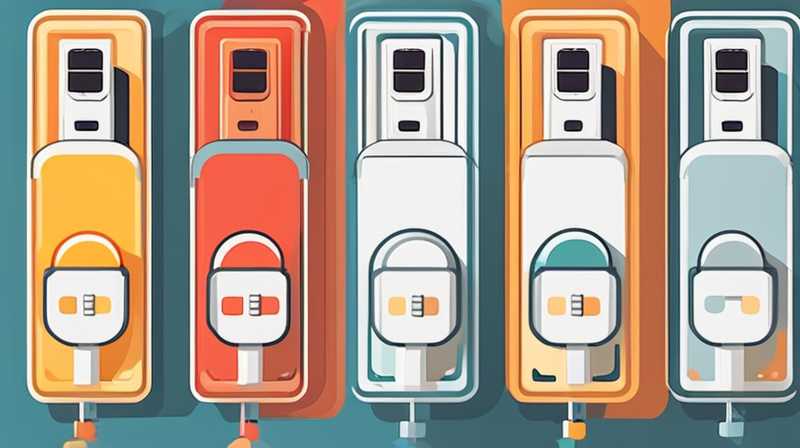
To combine a solar light switch effectively, follow these essential steps: 1. Understand the components involved, 2. Ensure proper wiring connections, 3. Set up the solar panel and batteries correctly, 4. Test functionality. Recognizing the distinctions between a solar light switch and traditional switches is crucial, as solar light switches are specifically designed to integrate solar energy into lighting systems, thereby promoting energy efficiency and sustainability. Proper installation requires attention to detail and an understanding of electrical principles, ensuring safe and reliable operation.
1. UNDERSTANDING SOLAR LIGHT SWITCH COMPONENTS
Solar light switches utilize renewable energy by converting sunlight into electrical energy, which powers various fixtures and devices. The primary components of a solar light switch include the solar panel, batteries, charge controller, and the light fixture itself. Understanding each of these components is pivotal in ensuring a seamless combination.
The solar panel is responsible for capturing sunlight and converting it into DC (direct current) electricity. This energy is then stored in batteries for use during periods of low or no sunlight. A charge controller regulates the flow of electricity between the solar panel and batteries, preventing overcharging and ensuring the longevity of the batteries. The entire system is designed to be user-friendly while maximizing energy efficiency.
2. ENSURING PROPER WIRING CONNECTIONS
Wiring connections between the solar panel, charge controller, batteries, and the light fixture need careful consideration. It is imperative to follow the manufacturer’s specifications for wiring and connectivity. Neglecting this aspect may result in malfunction or safety hazards.
When wiring the components, utilize connectors that ensure solid connections and good conductivity. Using thick gauge wires reduces voltage drop and ensures that the system functions efficiently. Consulting electrical diagrams specific to the components being used can provide additional clarity, facilitating accurate connections that promote safety and functionality.
3. SETTING UP THE SOLAR PANEL AND BATTERIES
The installation of the solar panel and batteries requires meticulous planning. Select an ideal location for the solar panel, ensuring it receives maximum sunlight exposure throughout the day. This increases its efficiency and performance consistently.
Proper placement of batteries is equally important. Batteries should be positioned in a well-ventilated, dry space to prevent overheating and moisture exposure, which could impair their efficiency and lifespan. Additionally, implementing safety measures, such as fuses and circuit breakers, enhances protection against electrical failures or surges.
4. TESTING FUNCTIONALITY
After all components are installed and connected correctly, it’s essential to test the system’s functionality. Conducting a thorough test involves evaluating both daytime and nighttime performance. Begin by checking the solar panel’s output during sunlight applications, ensuring that it generates the expected voltage.
At night, observe the operation of the lighting fixtures to confirm that they illuminate properly. If any discrepancies arise, revisit the wiring connections and component placements, making necessary adjustments to enhance performance. Understanding how to troubleshoot common issues is beneficial for maintaining the system over time.
FAQs
WHAT IS A SOLAR LIGHT SWITCH?
A solar light switch is a device that manages the operation of lighting systems powered by solar energy. This switch typically integrates with solar panels and batteries to enable lights to turn on automatically at dusk and off at dawn. It serves as a sustainable alternative to traditional electric switches, allowing for energy conservation and reducing electricity costs. The device operates by detecting ambient light levels and facilitating the charging of batteries during daylight hours while providing power to the light fixture at night.
HOW DOES A SOLAR LIGHT SWITCH WORK?
The operational mechanism of a solar light switch revolves around solar energy conversion. During daylight, solar panels absorb sunlight and convert it into direct current electricity. This electricity charges a battery that stores energy for nighttime usage. When ambient light decreases to a certain threshold, the solar light switch activates, allowing electricity from the battery to power the connected light fixtures. This automated functionality enhances convenience while minimizing energy reliance on traditional electrical grid systems.
WHAT MAINTENANCE DOES A SOLAR LIGHT SWITCH REQUIRE?
Maintaining a solar light switch ensures its longevity and performance. Regularly cleaning solar panels is crucial as dirt and debris can reduce their efficiency. It is advisable to check all connections and wiring periodically to identify any signs of wear or damage. Additionally, inspecting batteries for corrosion or leakage is essential. Proper maintenance enhances performance and prolongs the lifespan of components, ensuring the system operates efficiently year-round.
Successfully integrating a solar light switch into your lighting system ultimately reshapes energy consumption and promotes sustainability. The awareness of each component plays a pivotal role; understanding the solar panel, batteries, charge controller, and light fixtures is essential. Ensuring proper wiring greatly enhances functionality and safety, augmenting overall system performance. An optimal setup of solar panels and batteries is vital, enhancing energy capture and storage. Finally, diligent testing of functionality guarantees reliability and illuminates the efficiency of the system. Embracing solar technology not only benefits the environment but also encourages a future driven by the potential of renewable energy solutions. Proper implementation of solar light switches signifies a progressive approach towards energy consumption, urging individuals to adopt sustainable practices for a greener world. Engaging with this technology fills a significant gap in today’s rise for eco-friendly solutions and contributes to a cleaner planet, demonstrating the importance of adapting modern solutions in everyday applications for the benefit of all.
Original article by NenPower, If reposted, please credit the source: https://nenpower.com/blog/how-to-combine-a-solar-light-switch/


